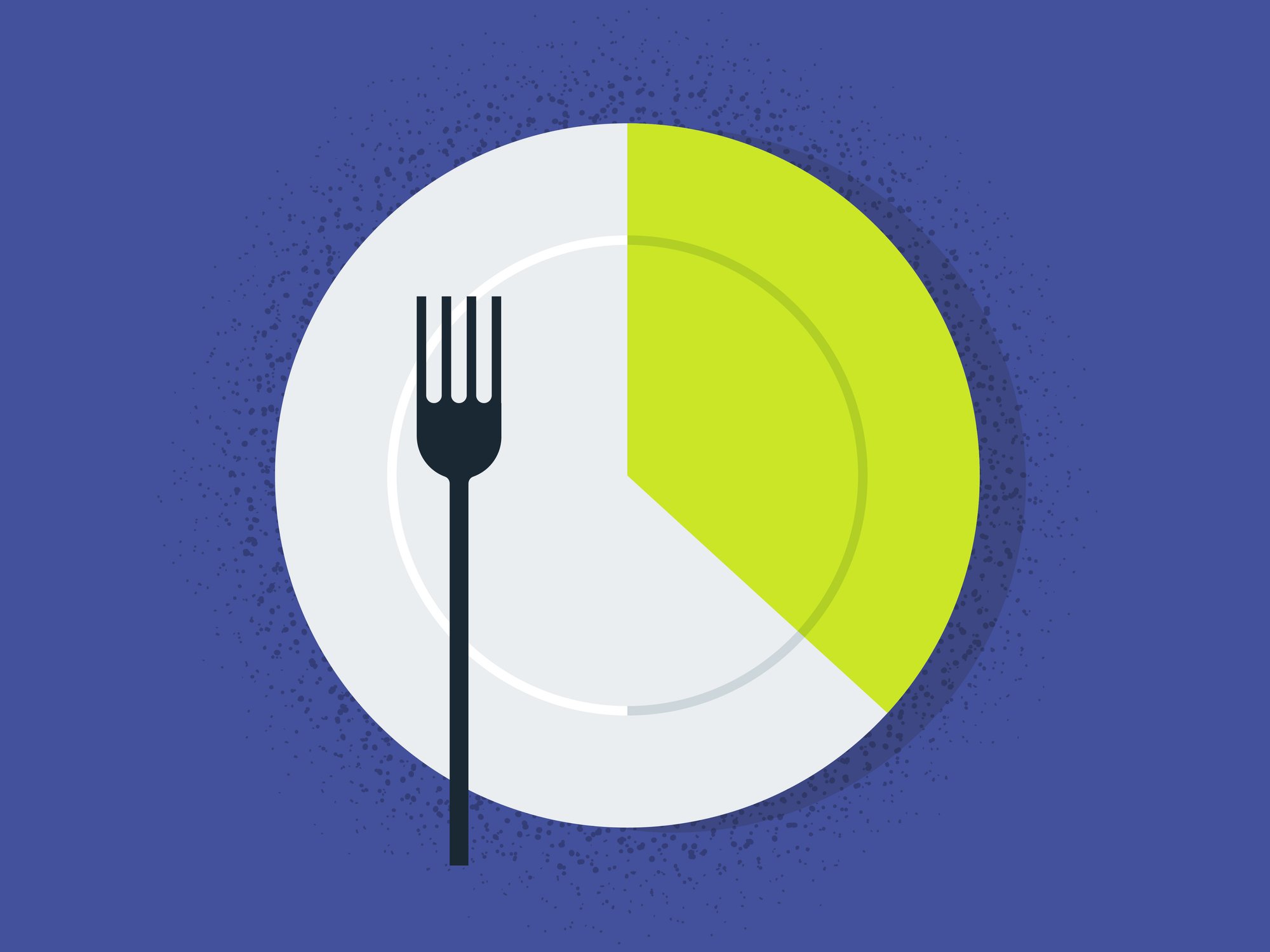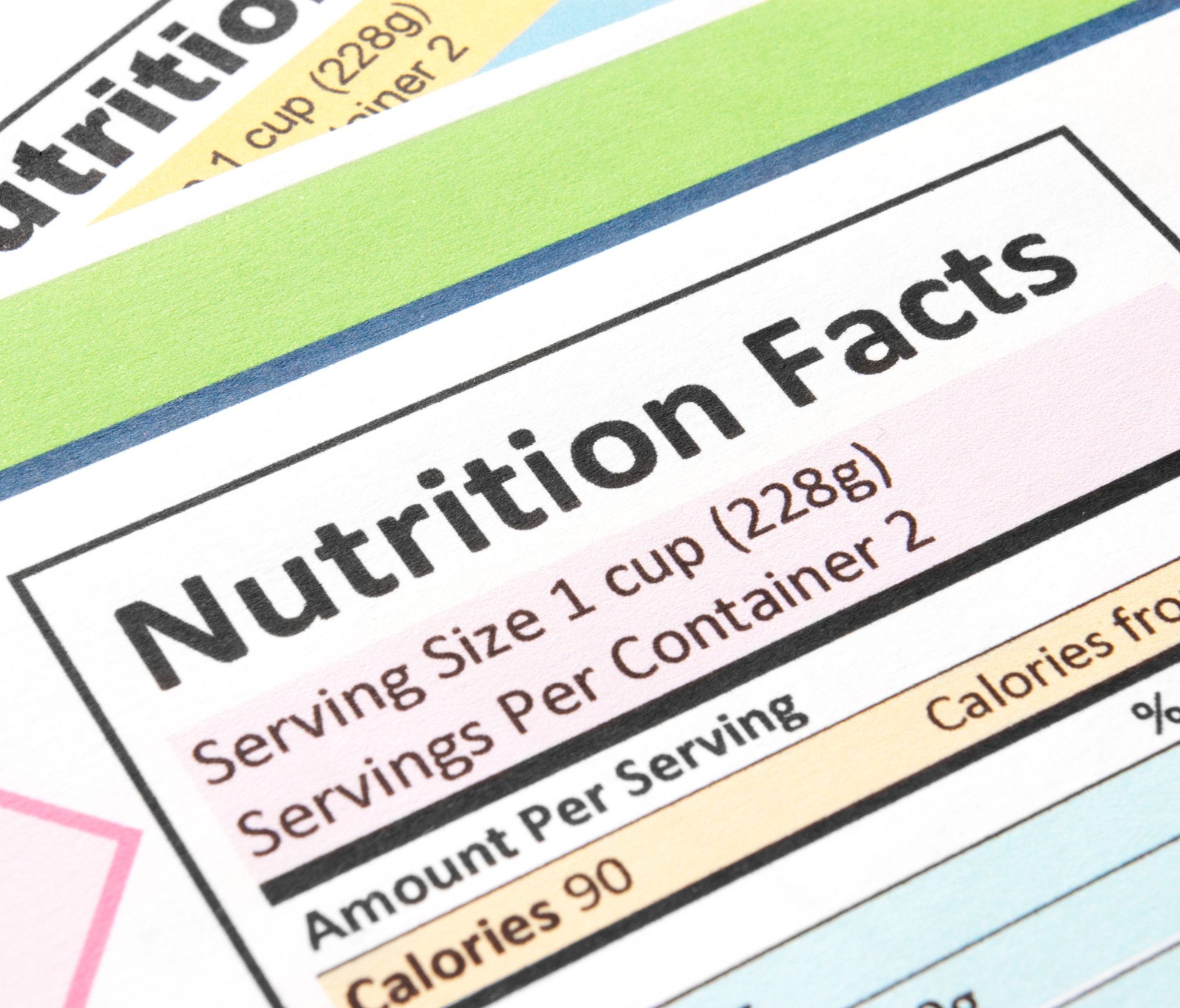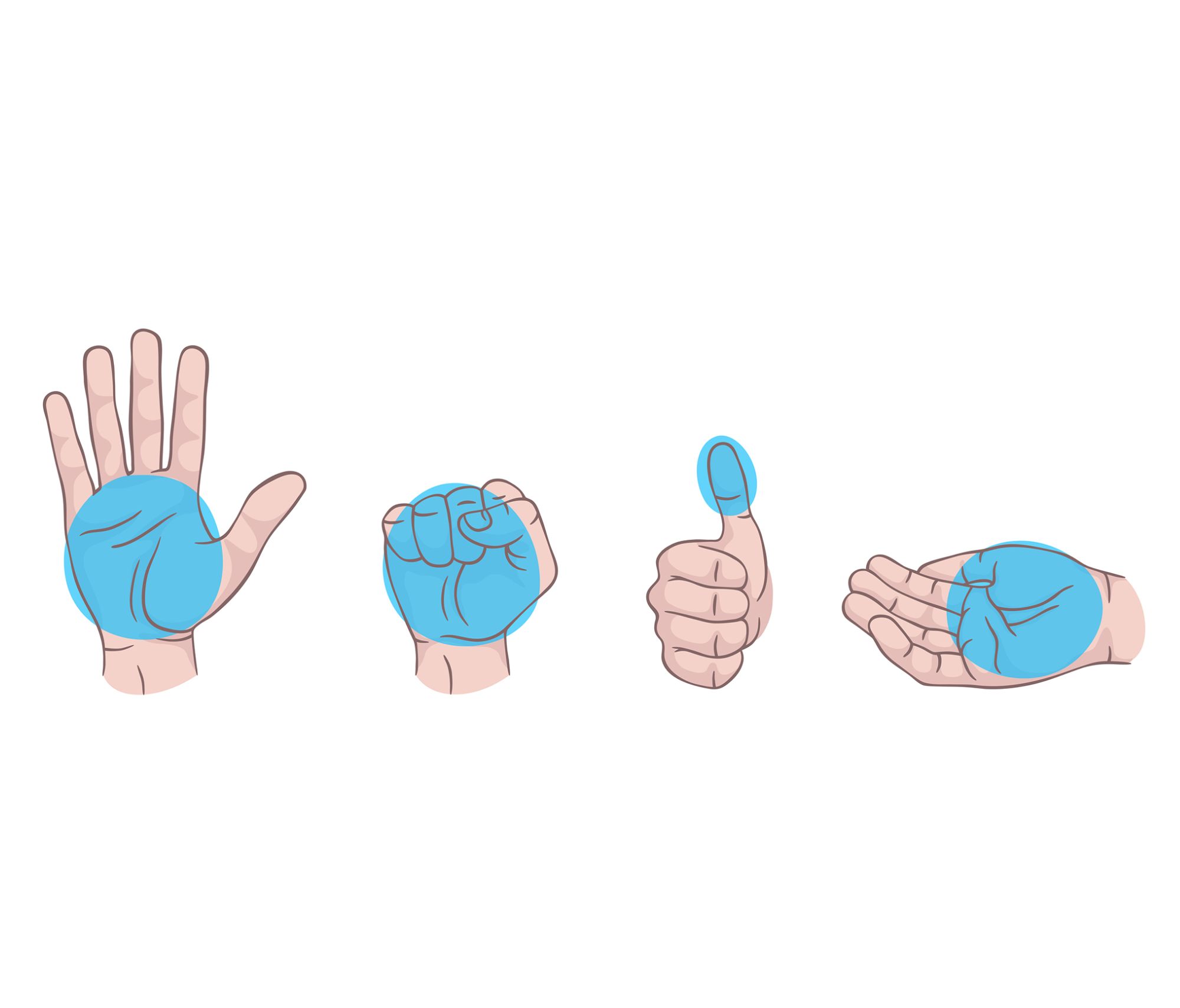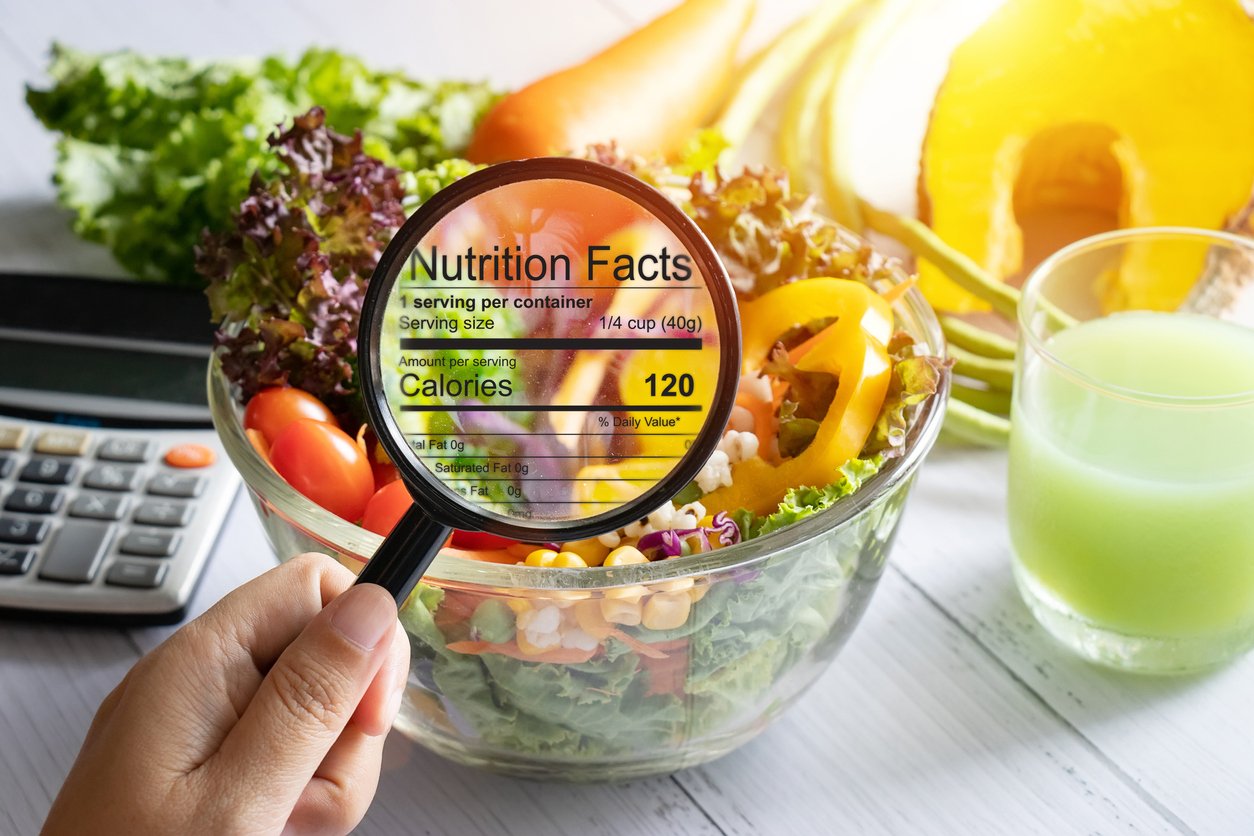In ancient times, if they had food at all, most people only had two options: eat until you’re full, or eat until the food runs out. But these days, it’s more complicated. With the spread of the industrialized food industry, a newfound abundance of food options has created a complex relationship between people and their meals.
One of the many tools that people use to navigate through the confusion is guidelines that aim to tell us how much of certain foods to eat, and when to stop: serving size and portion size. While both refer to how much of a particular food is considered appropriate to eat, the two terms actually have very different meanings.
These guidelines matter because overeating is one of the leading causes of obesity, a condition that has reached epidemic proportions in the US and, increasingly, around the globe. But the fact that there are two different metrics, which are sometimes used interchangeably, can cause real confusion about how much to eat.
In this article, we’ll explore the distinction between serving size vs portion size, to help you make informed eating choices. We’ll also discuss different ways to determine how much to eat, as well as tips on managing portion control.
The goal here is to help you make informed choices about how much is best for you to eat to optimize your diet and overall health.
But First…
Let’s make sure one thing is totally clear: What you eat is at least as important as how much you eat. Eating “just one serving” of donuts won’t do your health any favors, and overeating kale probably will. On this website, you’ll find lots of articles on why certain foods are healthier than others — and the data on this is overwhelming. But for now, let’s focus on the “how much” part of the equation, because that matters, too.
So, What Is a Serving Size?
Serving size has a legal definition: the measured amount of food that is considered to be an appropriate amount to consume in one sitting. The manufacturer determines this amount, with regulatory oversight from government agencies such as the US Food and Drug Administration (FDA).
In the US, serving sizes derive from the Code of Federal Regulations, Title 9, Chapter 3, Subtitle A, Part 317, Subpart B: 317, poetically labeled “reference amounts customarily consumed per eating occasion” (RACCs for short).
Mostly, they’re based on data gleaned from national food consumption surveys.
Sometimes there’s not enough survey data to figure out how much the average person eats of, say, Fruity Blergs breakfast cereal or canned chickpeas. In that case, the USDA’s Food Safety and Inspection Service (FSIS) considers other sources of information, including dietary guidelines, serving sizes used by manufacturers and grocers, and serving sizes used by other countries.
A cryptic source of data is “serving sizes recommended in comments,” although the law fails to describe exactly what comments it’s referring to. Blog comments? Offhand remarks at dinner parties? Stand-up routines?
Here’s the truly mind-boggling thing about serving sizes: They aren’t technically recommendations. Instead, serving sizes are mandated by law to reflect the amount of food that people typically consume, rather than how much they should consume.
Comedian Brian Regan jokingly put it this way: “I’m in the store reading the Fig Newtons label. I looked at the serving size: two cookies! Who… eats two cookies? I eat Fig Newtons by the sleeve. Two sleeves are a serving size!”
Changes to Serving Sizes
The reference amounts customarily consumed, or RACCs, are currently based on 2003–2008 data from the National Health and Nutrition Examination Surveys. And many of them have changed over time to reflect what the FDA calls a “reality check.” A serving of ice cream, for example, is now ¾ cup, a 50% increase over the old size, which means that the same pint of Rocky Road now “serves” three rather than four. (I’d argue that it’s also serving cancer and obesity, both of which tend to be promoted by a high-sugar diet, but that’s a rant for another time.)
One package of food can also contain multiple servings, as with cookies and ice cream. But some packages acknowledge the fact that for many people, a container is a serving, by including two columns on the nutrition label: one for nutritional info per serving, and one for the entire package.
Also, some foods and beverages previously labeled as more than one serving are now required to be labeled as just one serving. This is because, according to survey and manufacturer data, people are more likely to eat or drink the entire container or item in a single sitting (or, just as likely, a single standing or driving).
How Are Serving Sizes Used?
Manufacturers use serving size to quantify nutrition data for the nutrition facts label and compare their foods to similar foods. As a consumer, the serving size can help you understand how much of a particular nutrient you’re getting.
If you typically consume a whole cup of rolled oats for your morning oatmeal, checking the label will tell you that a single serving is 1⁄2 cup of dry oats. And since that single serving provides 40 mg of magnesium, you know that your breakfast bowl provides 80 mg of that nutrient.
Remember that serving sizes are norms, not recommendations. So they aren’t reliable guides to how much you should consume for optimal health. If you are satisfied with that full cup of rolled oats, cutting back because you’re eating two servings may leave you underfed, especially if you’re omitting other breakfast foods. (For more on why oats can make an awesome and healthy breakfast, see our article here.)
Because serving sizes reflect what people consume on average, they can also change over time. In some cases, serving sizes have increased, as we saw with ice cream. Another example is soda, which went up from an 8- to a 12-ounce serving.
On the other hand, some foods have had their serving sizes reduced. A serving of yogurt, for example, is now six ounces, down from an earlier eight ounces.
Why does this matter? Because if the serving size for a food or beverage has either increased or decreased, the calories and other nutrients listed on the Nutrition Facts label will change as well.
And since serving sizes are a lagging indicator of people’s average eating and drinking habits, adhering to them — particularly in the case of highly processed foods — means that you’ll probably also consume the average number of calories. In 2022, the average person in Europe and North America consumed nearly 3,540 calories per person per day. Especially if a lot of those calories are coming from highly processed foods, that’s probably not a good thing.
Serving Sizes for Different Foods
The 1990 Nutrition Labeling and Education Act requires all packaged foods to present nutritional information on their labels, including serving size and number of servings per package.
If you’re preparing for Jeopardy! and you’ve got a strong hunch that one of the categories will be serving sizes of various foods, here are some serving sizes for different foods you can memorize.
What Is Portion Size?
Now that we’ve learned all about serving size, it’s time to tackle that other mysterious term: portion size. At this point, you might be expecting portion size to be another concept steeped in regulatory complexity.
But it turns out that portion size is basically the amount of a food or beverage that you choose to consume in one sitting. Unlike serving size, it’s not regulated by any governmental agency but often comes in the form of advice from nutrition professionals. Your “portion” can be more or less than the serving size, contain multiple servings, or just fractions of a serving.
For example, the serving size for cooked broccoli, 85 grams, is a shade under one cup. If you like broccoli as much as I do, and you have a yummy sauce to boot, your portion size might be double or even triple the serving size.
You decide on your portion, unless you’re eating out, in which case the restaurant does it for you. When you watch people serve themselves on a buffet line, you might notice that the portion sizes are often determined by the size of the plate; if the pasta primavera is spilling onto their shoes, it’s probably even more than a portion.
The variability of portion size reminds me of the “two scoops” of raisins in Kellogg’s Raisin Bran commercials. They made a very big deal about it, but never got around to defining the size of a “scoop.” There were two scoops on the big family-size box and two scoops in the tiny variety pack box — so I’m guessing that “scoop” was as malleable and imprecise as “portion.”
Determining How Much to Eat
Since both serving and portion sizes are attempts to identify ideal consumption patterns, I think it’s useful at this point to ask: How can serving or portion sizes help you eat enough but not too much food?
First, it’s important to understand that individuals have vastly different nutritional needs. Factors that may influence how much you need to eat can include your age, your current weight and height, the speed and efficiency of your metabolism, your biological sex, how active you are, and your health status and health goals.
So what is a large portion to one person might be a tiny nibble to another.
Second, serving and portion sizes are completely noncommittal when it comes to the nutritional qualities of food. Looking at food just in terms of weight, volume, or even calories and macronutrient ratios only gives us a slice of the larger (and more important) whole picture. Nutritional density — how many and what kinds of micronutrients are delivered by weight, volume, or number of calories — matters more for your diet and ability to meet your nutritional needs.
Hand Portion Sizes
With both of those caveats, you can still use serving and portion sizes to help you choose amounts to consume with awareness and intention. Measuring food by hand can help you get closer to recommended serving sizes. (It’s probably a good idea to use your actual hand, and not, say, that of Andre the Giant.)
Using human body measurements has a long history. Those who use the imperial system still measure human height in feet and the height of horses in hands. And since most of us are more familiar with our own bodies than with grams, ounces, cubic milliliters, and calories, we can use them to approximate servings.
Hand portion sizes include:
- An average-sized fist — about 1 cup
- A small, scooped handful — about ½ cup
- The palm of the hand — about 3 ounces
- The size of the thumb — about 1 tablespoon
- The tip of the pointer finger to the first joint — about 1 teaspoon
Mindful Eating
The most conscious way to determine how much you should eat may be by practicing mindful eating, which simply means consciously directing your attention to your food via your senses.
Many of us have had the experience of overeating, especially very tasty or highly processed food, when we weren’t paying attention. Moviegoers can down huge amounts of popcorn during thrillers. And all of us are susceptible to over-nibbling while watching TV, working on the computer, or attending to stressful thoughts.
Mindful eating can allow you to notice your hunger and satiety cues with sensitivity and in a timely fashion, so you can stop before you feel like you’ve swallowed a baby (or not-so-baby) elephant.
Tips for Practicing Portion Control
In addition to mindful eating, which takes practice and can be difficult for some people, there are other practical ways to guard against overeating and the resultant weight gain and health problems it can cause.
Many experts blame overeating and unwanted weight gain on portion sizes that have increased over the years. The trend of the last few decades towards “supersizing” meals has had the consequence of supersizing people as well.
And it’s not just in the United States (although many Europeans are amazed at the huge American portions and the speed at which Americans can consume them). One billion people worldwide are obese, and that number is still rising.
Fat-shaming is cruel, and as far as I’m concerned, it has no place in a compassionate society. Anybody can be beautiful, and everybody deserves love, regardless of their size or their girth.
And we also do know that excess weight is a real health issue and that it can contribute to type 2 diabetes, cardiovascular disease, hypertension and stroke, and various forms of cancer, among many other dangerous conditions.
So if you want to avoid overeating, here are some portion control strategies that might help.
1. Use a smaller plate at mealtime.
Studies have shown that we tend to think of whatever is on our plate as a portion.
2. Don’t eat directly out of the package.
If you’re going to have Fig Newtons, take out a couple and put the rest of the cookies back in the box. Better yet, skip the Newtons and just have some figs — we’re often far less likely to overeat foods that are whole and minimally processed.
3. Order smaller portions.
When eating with others, order small plates or appetizers instead of entrées; skip appetizers, drinks, and desserts in favor of a single entrée; or split dishes with friends and family. And try to eat mindfully whether you’re alone or with others — really taking time to chew and experience the flavors and textures of what you eat.
4. Use a portion guide.
Use the Physicians Committee for Responsible Medicine’s “Power Plate” as a guide to how much to eat of different foods. And read nutrition labels for serving size, as well as the nutrients provided in each serving.
The Bottom Line: Servings vs Portions
Understanding the difference between serving size and portion size can help you make informed choices about your diet and overall health. While the terms are often used interchangeably, they do have distinct meanings.
Serving size refers to a measured amount of food typically found on packaged foods, while portion size is the actual amount of food served and consumed at one time. By familiarizing ourselves with serving sizes and utilizing portion control strategies, we can avoid overeating and make healthier and more conscious choices about the amount of food that we consume.
Ultimately, by incorporating strategies like mindful eating, emphasizing nutrient-dense foods, and paying attention to portion and serving size, you can make positive changes to your diet and health.
Tell us in the comments:
-
What foods do you tend to overeat if you’re not careful?
-
Think of a food you eat a lot and take a guess at the serving size. Now check — how close were you? Did you over- or underestimate?
-
What’s one food where your ideal portion size is very different from the official serving size?
Featured Image: iStock.com/RLT_Images









